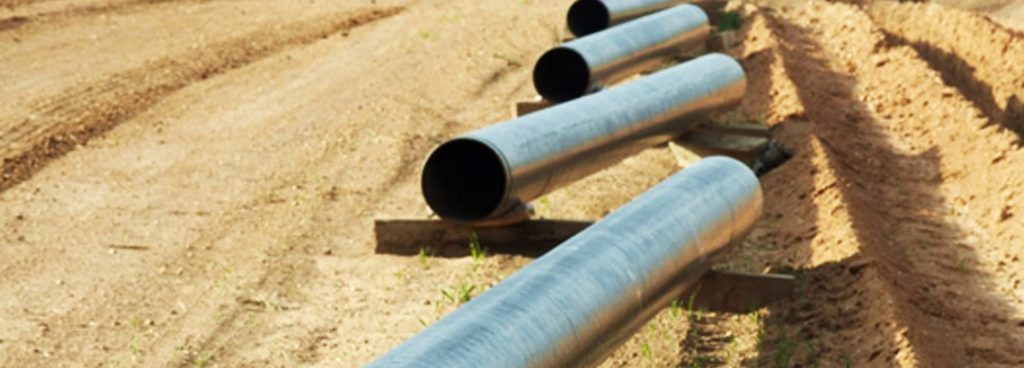Experience Excellence: Premier Pipeline Welding Inspection Providers You Can Count On
Experience Excellence: Premier Pipeline Welding Inspection Providers You Can Count On
Blog Article
Comprehensive Review of Pipe Welding Assessment Treatments
Pipeline welding evaluation treatments play an important function in ensuring that bonded connections fulfill rigorous sector criteria and requirements. From thorough pre-welding assessments to extensive post-weld evaluations, a well-defined assessment procedure is vital for preserving the structural stability of pipelines.
Pre-welding Assessment Preparations
Prior to beginning the welding procedure, complete pre-welding assessment preparations are vital to guarantee the stability and quality of the weld joint. These prep work include a meticulous examination of the materials to be welded, the welding equipment, and the workplace. The materials have to be inspected for any problems, impurities, or incongruities that might endanger the weld. This consists of checking for proper material qualities, dimensions, and surface area conditions. Pipeline Welding Inspection. In addition, the welding tools requires to be evaluated to validate that it is in great functioning condition, calibrated appropriately, and ideal for the certain welding procedure. Any kind of concerns with the equipment need to be dealt with without delay to stop issues in the weld. Lastly, the workplace have to be reviewed for cleanliness, proper ventilation, and precaution to make sure a helpful setup for the welding operation. By conducting complete pre-welding assessment prep work, prospective issues can be determined and solved beforehand, bring about reliable and top quality weld joints.
Welding Procedure Qualification
Detailed pre-welding assessment prep work lay the foundation for the critical procedure of Welding Procedure Certification, guaranteeing the honesty and top quality of the weld joint. Welding Treatment Credentials (WPQ) is an important action in the welding process that entails testing and licensing welding procedures to ensure they fulfill particular criteria and demands. The WPQ procedure usually consists of welding procedure spec growth, welding procedure credentials screening, and documentation of the outcomes.
Throughout welding treatment specification growth, essential details such as the welding procedure, welding materials, joint style, and welding criteria are defined to produce a thorough treatment. Subsequently, welding treatment credentials testing is conducted to verify the recommended procedure's stability. This testing commonly entails welding examination discount coupons that undergo different mechanical and non-destructive tests to analyze the weld's quality and adherence to the specified requirements.
In-process Weld Examination
Throughout the welding procedure, in-process weld examination plays an essential function in making sure the top quality and honesty of the weld joint - Pipeline Welding Inspection. This kind of inspection involves monitoring the welding parameters, evaluating the weld bead formation, and identifying any potential problems or gaps as they happen. By carrying out in-process weld inspections, welding operators can quickly deal with any issues that might emerge, thereby preventing further issues and making certain that the last weld important source fulfills the needed specifications
Common approaches made use of for in-process weld assessment include aesthetic evaluation, liquid penetrant screening, magnetic bit Check This Out testing, ultrasonic screening, and radiographic testing. Aesthetic assessment is commonly the very first action while doing so, enabling examiners to aesthetically evaluate the weld for surface irregularities such as splits, porosity, or incomplete fusion. Advanced techniques like ultrasonic screening and radiographic testing supply in-depth insights right into the internal framework of the weld, guaranteeing that there are no covert problems that can compromise the weld joint's toughness and integrity. On the whole, in-process weld assessment is vital for keeping the high quality and integrity of welded pipes.
Non-destructive Screening (NDT)
Non-destructive Testing (NDT) is an essential method utilized in pipe welding inspection to examine the honesty of weld joints without causing damage to the welded framework. By making use of various NDT methods, examiners can review the quality of welds and identify any type of issues or suspensions that may jeopardize the architectural strength of the pipe. Common NDT methods used in pipeline welding evaluation include Radiographic Testing (RT), Ultrasonic Screening (UT), Magnetic Fragment Examining (MPT), Fluid Penetrant Screening (LPT), and Visual Screening (VT)
RT includes the usage of X-rays or gamma rays to generate pictures of the interior structure of the weld, allowing assessors to find flaws such as porosity, cracks, or incomplete combination. Additionally, VT entails visual inspection of welds to recognize any kind of noticeable imperfections.
Post-weld Examination and Paperwork


Paperwork of post-weld assessment searchings for is essential for preserving high quality control records and guaranteeing compliance with sector standards and laws. In-depth records ought to include details about the examination methods utilized, the location and nature of any type of flaws discovered, and any restorative activities taken - Pipeline Welding Inspection. Proper paperwork not only works as a document of the weld's quality however additionally aids in future maintenance and assessment processes
Final Thought

In final thought, pipeline welding assessment treatments play a crucial role in ensuring the high quality and stability of welds. On the whole, adherence to correct examination methods is vital to the success of pipeline welding jobs.
From careful pre-welding assessments to detailed post-weld evaluations, a well-defined evaluation process is crucial for keeping the architectural sturdiness of pipes. By carrying out in-process weld assessments, welding drivers can without delay attend to any type of issues that may arise, therefore guaranteeing and preventing more flaws that the final weld a knockout post satisfies the needed requirements.
Common methods utilized for in-process weld assessment include aesthetic assessment, liquid penetrant testing, magnetic bit testing, ultrasonic testing, and radiographic screening.Non-destructive Testing (NDT) is an essential approach utilized in pipeline welding examination to examine the integrity of weld joints without creating damage to the bonded structure. Post-weld examination includes various techniques to assess the welds for flaws, including aesthetic evaluation, color penetrant testing, magnetic fragment screening, ultrasonic screening, and radiographic testing.
Report this page